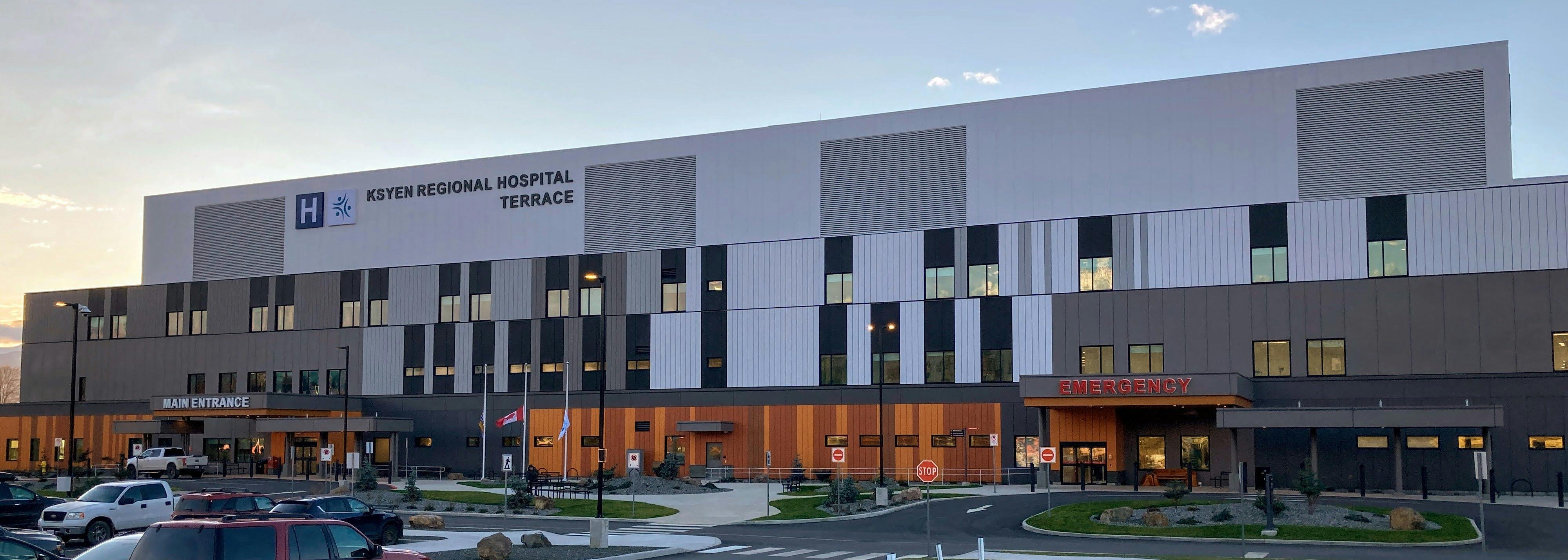Cranes are coming down!

 The cranes have been part of views from every direction in Terrace for the last year, including this one from Lanfear Hill.
The cranes have been part of views from every direction in Terrace for the last year, including this one from Lanfear Hill.
Terrace’s skyline will change drastically in the next few days.
As of Tuesday, October 4, the two tower cranes on the Mills Memorial Hospital (MMH) construction site will be gone.
The cranes garnered significant attention when they first went up. For several months, local residents – including many excited children – would stand on the sidewalk near the Sande Overpass watching them work. Similarly, local photographers and videographers took the opportunity to catch visuals of the cranes swiveling and lifting, as this is the only time Terrace has ever had something like this in town.
The cranes will be dismantled over the course of four days, starting Friday, September 30. The crane on the south end of the site, closer to Haugland will be taken down first and the crane on the north end will follow.
Tower cranes are made up of a vertical tower (the mast) and an outstretched jib (the working arm). The jibs will be removed first, then the vertical towers taken down in pieces. This is the reverse order of how the cranes were put up.
The two cranes were initially erected just over a year ago, in August 2021, for the purpose of moving heavy equipment and materials. With the structural bulk of the new hospital complete, from here on, either smaller, mobile cranes or teleporters, which are forklifts with an extending boom, will be used to move materials to upper floor locations.

- Each operator works with a person on the ground, called a rigger or a swamper. A rigger’s main responsibility is to safely hook up loads for the operator to move with the crane.
- Each morning the MMH crane operators would start their shifts at 6am and meet to discuss plans for the days with safety being at the forefront of these discussions. They’d start climbing up their towers to the crane cab at approximately 6:20 am, often in the dark but under the bright lighting on the top of the mast guiding their way. After running safety tests and inspections, they’d start moving materials around 7am. Shifts were 12 hours long, ending at 6pm, and the operators take their breaks in the cab, not leaving their post until the end of their shift.
- Each crane has two radio systems for on site communications. One is used to communicate with the rigger. The other communicates with the other crane operator.
- Crane operators must consider many factors when moving materials on site, including but not limited to, what’s happening on the ground, the weight and shape of the materials, the outside climate (especially the wind), how to best mitigate risks, and much more.

